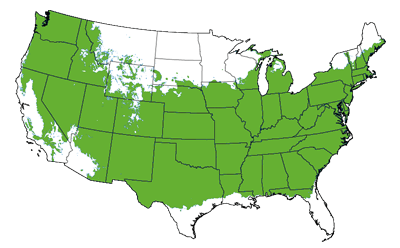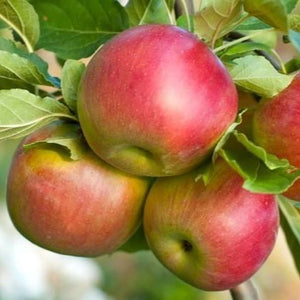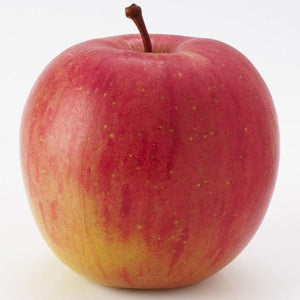Fuji Apple Tree
Product Details
 Growing Zones 5-8
Growing Zones 5-8
| Soil Type | Well Drained |
| Sunlight | Partial |
| Drought Tolerance | Good |
| Mature Height | 12-16 Feet |
| Mature Width | 12-14 Feet |
| Fall Color | Yellow |
| Bloom Color | White |
| Shipping Restriction | AZ, CA, ID, OR, WA |
Are you looking to plant a dwarf fruit bearing tree that gives you results fast? Look no further than the Fuji Apple tree! With a sugary sweet flavor, a fresh Fuji apple is a delicious treat. This apple touts a crisp, juicy texture and beautiful, red blushed skin. After biting into one of these apples, you will be thankful that the Fuji Apple tree produces a large yield.
You can even grow apples in the south with the Fuji Apple Tree! Fuji Apple trees bloom white flowers in mid to late spring. Ripe fruit are ready to pick around October. These trees are adaptable to many conditions but prefer moist, well-drained soil. Plant in partial to full sun for best results. This low chill variety even flourishes in the south, producing fruit into a zone 8.
The Fuji apple tree requires cross-pollination in order to produce fruit. Pair your Fuji apple tree with Gala, Golden or Red Delicious, Granny Smith, Honeycrisp or a Profusion Crabapple for best pollination. Pruning is recommended to encourage more branching and a heavier yield.
It is a snack that everyone in the family can enjoy. With an abundance of fruit year after year, you will love having your very own Apple tree. Harvest season is a fun and delicious time for the whole family. From fresh eating to juice squeezing to baking pies, Fuji apples will create traditions that last. Order your very own Fuji Apple tree and start anticipating a teaching and learning journey for kids and grownups alike!
When planting your Fuji Apple tree be sure to choose the right location and conditions for your new tree to thrive. Spring and Fall are ideal times to plant. However, if you avoid freezing temperatures and extreme heat you can plant your Apple tree almost any time of the year. Apple trees thrive in full sun and well drained soil. Water deeply when planting and twice weekly for 3 months while your tree is establishing. For the first year, we recommend watering deeply once weekly in spring and summer and once monthly in fall in winter after the establishment period. After the first year you will only need to water during dry spells. Adding a layer of 2 to 3 inches of mulch is recommended especially with newly planted trees. Do not allow the mulch to touch the trunk as this increases the chances of pests and disease. Fertilize in early spring and when planting to give your tree a boost. Choose a slow release fertilizer. When planting take care not to burn the roots by mixing the fertilizer into the soil before placing your tree in the hole. Prune your Apple in late winter to remove any dead, dying, or crowded branches. The best way to prevent disease and pests is by providing the appropriate care for your plants. Proper location choice, watering, and fertilization are the keys to your success. Scale, Aphids, Mites, and Apple Maggots are insects that can affect Apple trees. You can treat the scale, mites, and aphids naturally with horticultural oil, neem oil, or insecticidal soap. For severe infections you can use pesticides like carbaryl, also known as Sevin. Apple Maggot can be treated simply with traps you can purchase at any garden center. Apple trees can encounter fungal issues. Generally, treating after infection isn't extremely effective, so if you have problems yearly treat in early spring with fungicides to prevent infection. Neem Oil is an organic method of treating and preventing some fungal diseases and pests. It can be effective, but the entire tree must be coated in order for this method to be effective.
Apple trees are lovely in the landscape. Use them like you would any other flowering tree! They offer an attractive look, blooms, AND a healthy snack! Use as a specimen or focal tree in your yard, garden, or even a large mixed bed. Apple trees look gorgeous lining a long driveway or on either side of a short one. Plant at least 15 feet from other trees and your home to give your apple tree plenty of space.
For additional options, check out our Gala Apple trees.













